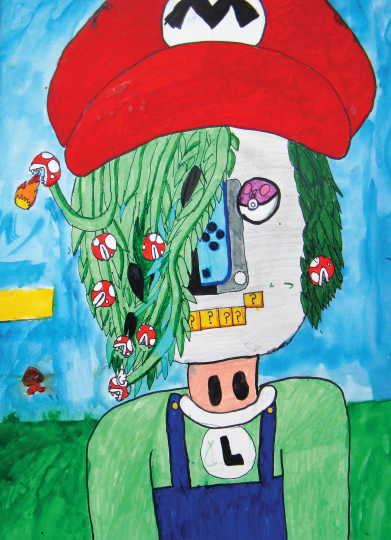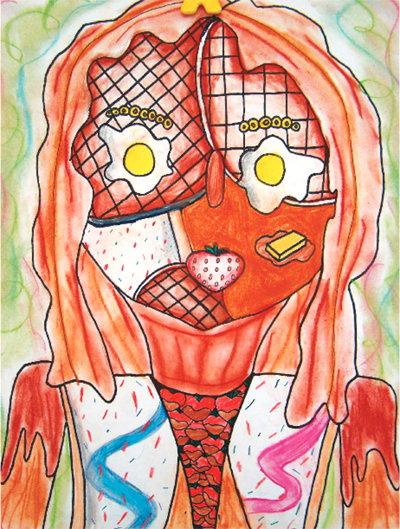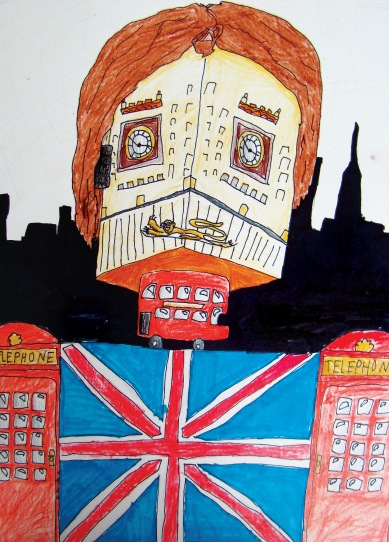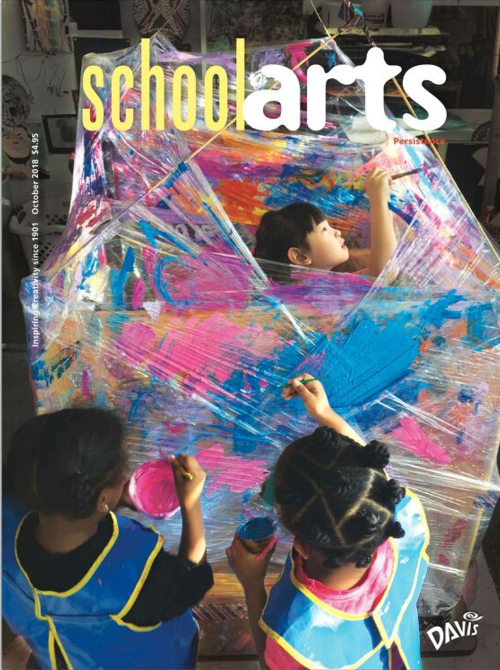 |
| Ricky, Nintendo-inspired Portrait. |
I test students this way to see if they are paying attention to their surroundings, developing their artist’s eye.There is always one student who seems to find those subtle clues before the others. Then the probing questions start. Who is that? Is that our next project? What is that made of?
I always respond to these questions evasively: “Oh, it might be something we are doing,” or “I just liked the picture so I thought I would hang it up for a while.” The week prior to a lesson, my room gets a total transformation related to the coming project idea and concept.
Inspired by Giuseppe Arcimboldo
I have always been inspired by Giuseppe Arcimboldo’s work. Arcimboldo (1526–1593) was an Italian painter best known for creating imaginative portraits made entirely of unexpected objects such as fruits, vegetables, flowers, fish, and books. He was someone who thought outside the box during a time when many artists were focused on the realist and religious qualities of an art piece. His work is considered to be surreal, while having realistic elements that relate to nature and identity. He created topsy-turvy portraits that look very different when viewed straight up and then upside down. How one could first come up with that idea and then actually possess the talent and skills to create it is stunning. As a class, we discussed Arcimboldo’s process, his career as a court portraitist, and his development as an artist.
The Process of Creating
We made a list of some of the themes that Arcimboldo used to create his portraits. The list included fruits, vegetables, books, the elements, and the seasons. Next, I asked students to individually compile their own list of themes—themes that were not used by Arcimboldo. Students’ lists included themes such as breakfast foods, the weather, candy, evolving technology, art supplies, birds, and emojis.
Self-Portraits
Before getting started, we reviewed how to draw a portrait. Using mirrors and proportion guidelines such as spacing and size, students created individual self-portraits, ensuring that each feature was properly positioned and in correct proportion. Self-portraits can be an intimidating subject matter to draw, but I think students were willing to stick with it knowing they would have some fun in the next step. After students drew their self-portraits, they could fill them with images that represented their themes.
 |
 |
| Natalie Taft, grade four. |
Noah, Spilling Tea, grade five. |
Giving Students Choices
I find it helpful to have certain criteria in a lesson, but you can also include opportunities for students to have more choices in their art-making. This project had the following criteria: (1) Create a self-portrait. (2) Use correct proportion and spacing when adding facial features. (3) Draw the subject matter fairly large to fill the page. (4) Emphasize on good composition. Students chose the theme of their self-portraits, paper size, and the media in which they worked. I feel that providing students with the power of choice really engaged them in their learning. It gave them a sense of ownership and pride in their work.
Reflections
This project allowed students to learn about a unique artist who defined thinking out of the box. To reflect, students wrote short stories to go along with their pieces, describing the life that their portrait had. There was excitement in the classroom and laughter at students’ humorous creations. When students are able to learn and have fun at the same time, they become lifelong learners and passionate artists as they grow in their own art-making.
Leigh Drake is a visual arts teacher at Old Donation School in Virginia Beach, Virginia. leigh.drake@vbschools.com
NATIONAL STANDARD
Connecting: Relating artistic ideas and work with personal meaning and external context.
W E B L I N K
www.giuseppe-arcimboldo.org/the- complete-works.html?pageno=1
View this article in the digital edition.




